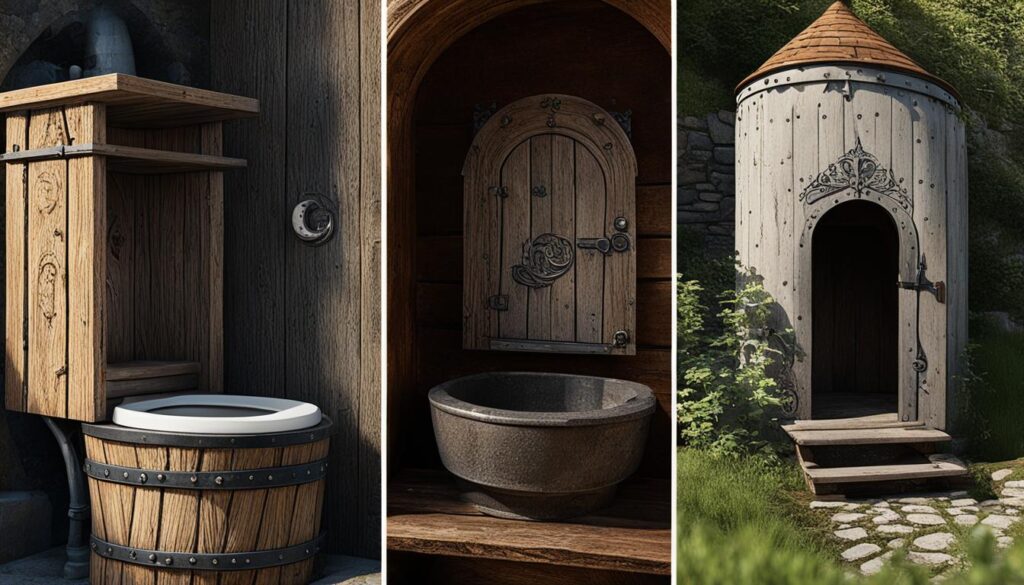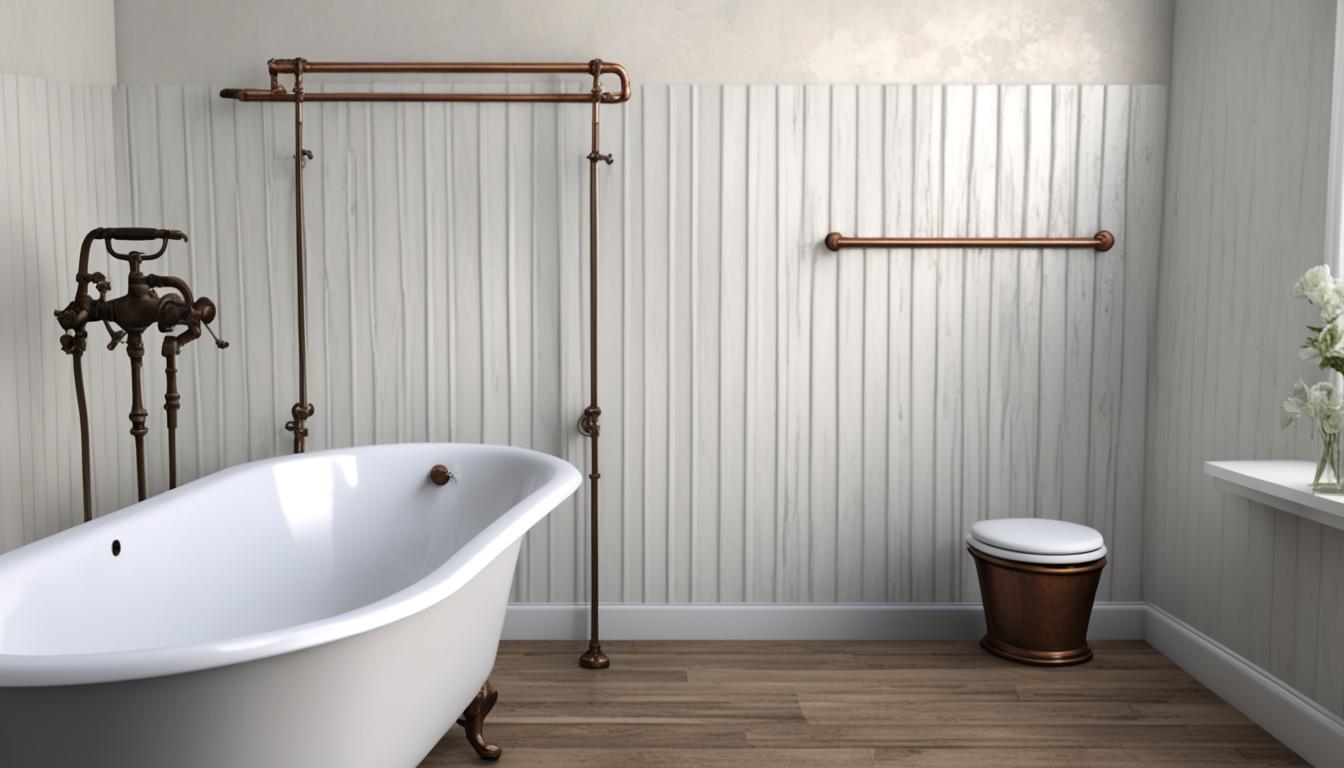While forms of plumbing have existed for thousands of years, indoor plumbing as we know it today was not common in American households until the late 19th and early 20th centuries. Just a hundred years ago, most homes lacked working toilets, sinks with running water, and the maze of pipes that are now standard in modern residences. The adoption of indoor plumbing accelerated after cities developed efficient water and sewage systems in the mid-19th century, enabling the widespread installation of early plumbing fixtures.
Prior to indoor plumbing becoming commonplace, having a reliable indoor water supply was a luxury reserved for kings, queens, and society’s wealthiest members. The convenience of running water and flush toilets was simply out of reach for the average person. The development of municipal water systems in the 1800s laid the groundwork for the eventual proliferation of indoor plumbing in the 19th century, marking a significant turning point in the history of sanitation and comfort within American homes.
Key Takeaways
- Indoor plumbing did not become widespread in American homes until the late 19th and early 20th centuries
- Early plumbing fixtures became more common after cities developed efficient water and sewage systems
- Before indoor plumbing, having running water was a luxury reserved for the wealthy
- Municipal water systems in the 1800s paved the way for the adoption of indoor plumbing
- The rise of indoor plumbing in the 19th century marked a significant milestone in home sanitation and comfort
Early Sanitation Systems and Plumbing Innovations
The history of ancient plumbing dates back thousands of years, with the first flushing water closet being discovered in Crete between 1500 and 1000 B.C. The people of Crete created sophisticated underground sewage and drainage systems, showcasing their advanced understanding of sanitation.
In 1596, Sir John Harrington invented a flush toilet for his godmother, Queen Elizabeth I. However, the queen refused to use it due to her fear of the sounds it made. It wasn’t until 1775 that Alexander Cummings received the first patent for a flushing toilet from the United States Patent and Trademark Office.

Mechanical showers also have a fascinating history, with the first one being invented by William Feetham, an Englishman, in 1767. Feetham’s system utilized a pump to push water into a bucket above the user’s head, which could then be released by pulling a chain, allowing the water to flow over the body.
In the early 1900s, Halsey Willard Taylor and Luther Haws invented the first modern drinking fountains to combat the spread of diseases caused by sharing drinking water. This innovation was a significant step forward in public health and sanitation. Interestingly, during the 19th century in New England, limited medical knowledge led to widespread fear and superstitions about vampires, often coinciding with tuberculosis outbreaks.
These early innovations in sanitation and plumbing laid the groundwork for the modern conveniences we enjoy today, demonstrating the ingenuity and resourcefulness of our ancestors in their quest for improved hygiene and public health.
19th-Century Indoor Plumbing
The 19th century marked a significant turning point in the development of indoor plumbing. In 1829, Isaiah Rogers, a visionary architect, made history by installing eight water closets in the Tremont Hotel of Boston, making it the first hotel in the United States to feature indoor plumbing. This groundbreaking innovation set the stage for widespread adoption of sanitary systems in both public and private spaces.
As the century progressed, indoor plumbing continued to evolve and spread. In 1833, The White House, the official residence of the President of the United States, was equipped with running water on the main floor, showcasing the growing importance and acceptance of this modern convenience. By the mid-1930s, lawmakers and medical professionals reached a consensus that sanitary plumbing was crucial for maintaining public health. As a result, hygienic guidelines and plumbing codes were established to guide the installation of safe and efficient systems throughout the country.
Early plumbing materials played a significant role in the development of indoor plumbing during the 19th century. Initially, wooden pipes were commonly used, with holes bored into elm and hemlock trees to create the necessary conduits. However, these wooden pipes had several drawbacks, including imparting a distinct wooden taste to the water, being prone to insect infestations, and frequently breaking. In 1804, cast iron pipes emerged as a more durable and reliable alternative, with Philadelphia becoming the first city to adopt this innovative material for its plumbing infrastructure.
The 19th century witnessed a series of remarkable plumbing innovations that transformed the way people lived and interacted with water in their homes. From the introduction of indoor water closets to the widespread adoption of cast iron pipes, these advancements laid the foundation for the modern plumbing systems we rely on today. The combination of visionary architects, progressive legislation, and improved materials propelled the development of indoor plumbing, ultimately leading to enhanced sanitation, convenience, and public health for generations to come.
Overcoming Challenges and Modern Advancements
In the 1800s, the connection between poor sanitation and the spread of diseases like cholera and typhoid became apparent. This realization led to the development of improved sewerage systems designed to efficiently direct wastewater away from homes, reducing the risk of contamination and illness. These advancements in plumbing safety marked a significant turning point in public health and laid the foundation for modern plumbing practices.
The 20th century brought forth numerous innovations in plumbing technology. In 1937, Alfred Moen revolutionized the industry with his invention of the single-handle tap, a solution born from his own experiences with the plumbing challenges of traditional two-handle faucets. During the 1940s, wartime restrictions on materials like iron, steel, and copper prompted American manufacturers to explore alternative materials, such as cast iron and plastics, leading to improved and more versatile plumbing components.
In recent decades, the focus of modern plumbing has shifted towards prioritizing safety and water conservation. The use of hazardous materials like lead in piping has been phased out, ensuring a safer water supply for households. Additionally, engineers adhere to stringent codes and regulations set by governments worldwide to create efficient and sustainable plumbing systems. These efforts not only contribute to environmental sustainability but also help conserve our precious water resources for future generations.
As we move forward, the plumbing industry continues to evolve, embracing new technologies and materials that enhance efficiency, durability, and plumbing safety. From smart water monitoring systems to low-flow fixtures, modern advancements in plumbing are paving the way for a more sustainable and reliable future. By learning from the challenges of the past and leveraging the innovations of the present, we can ensure that our homes and communities benefit from the highest standards of sanitation and water management.

Leave a Reply